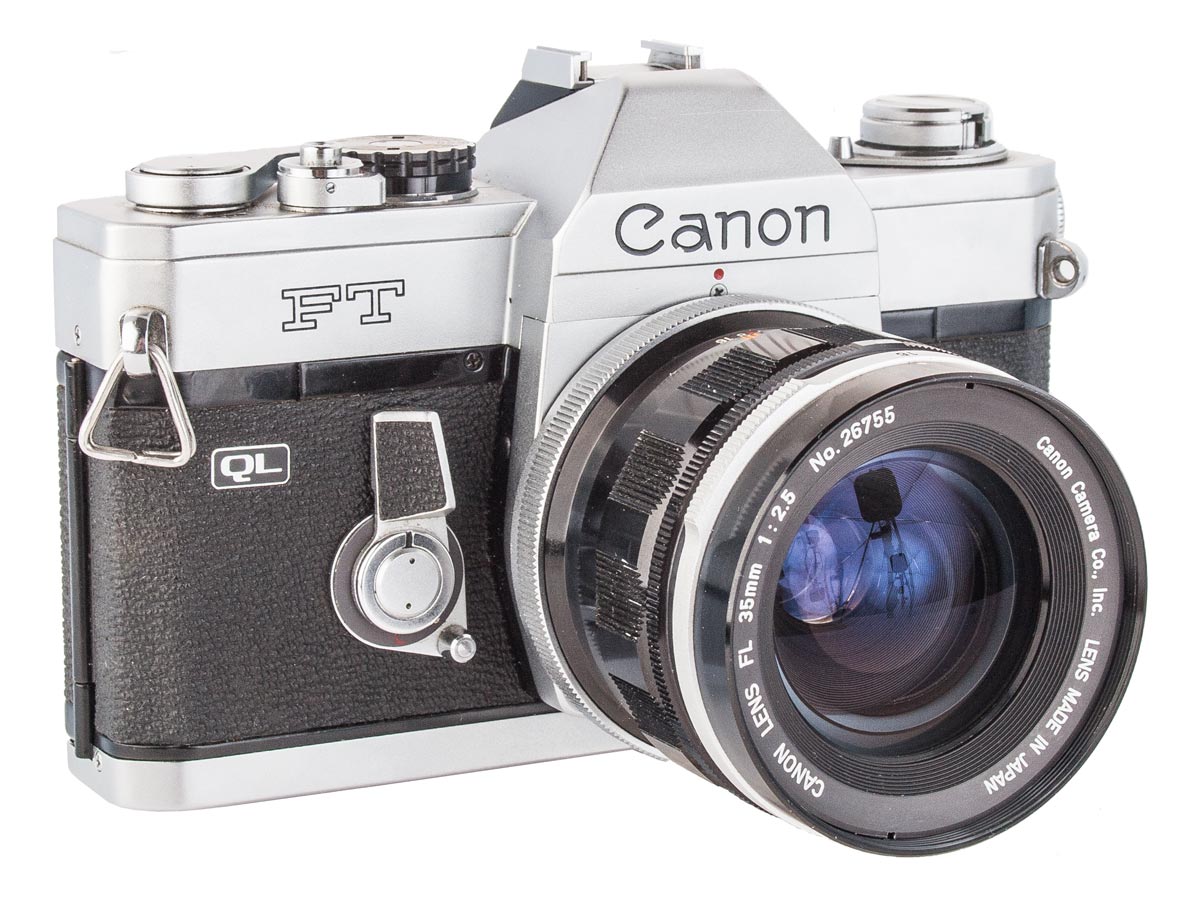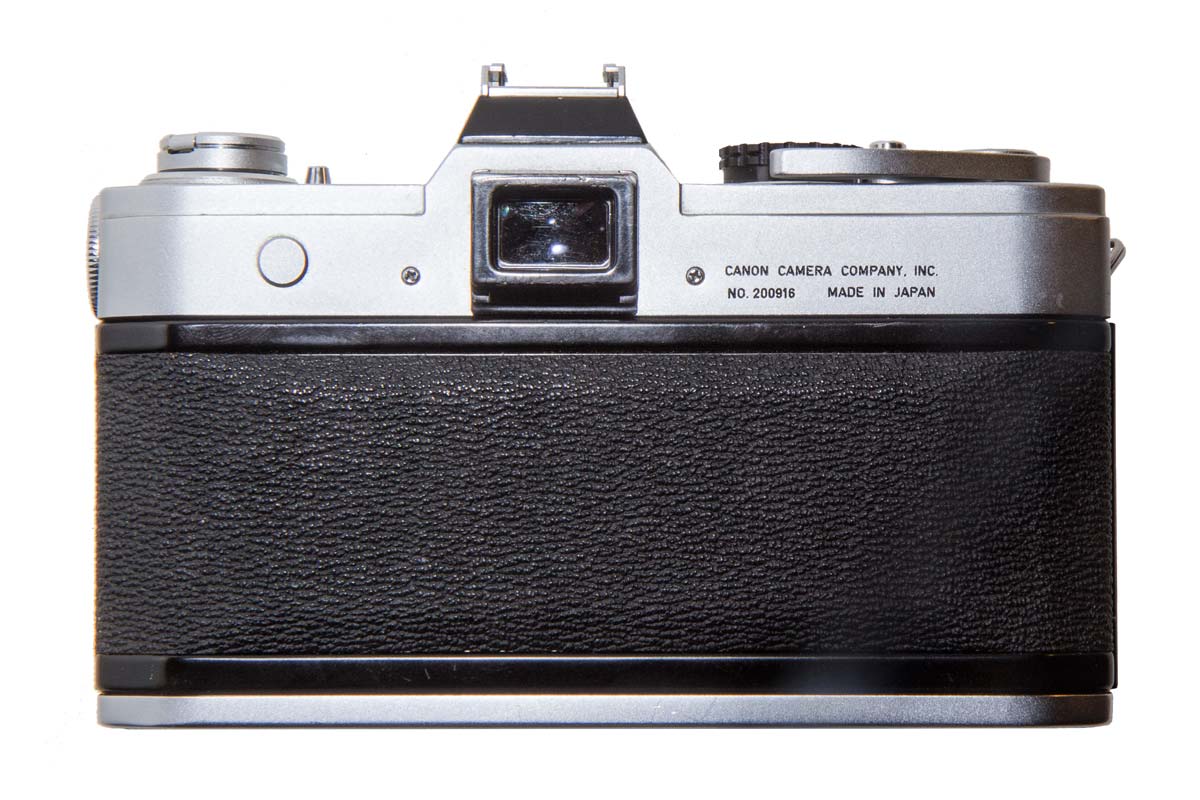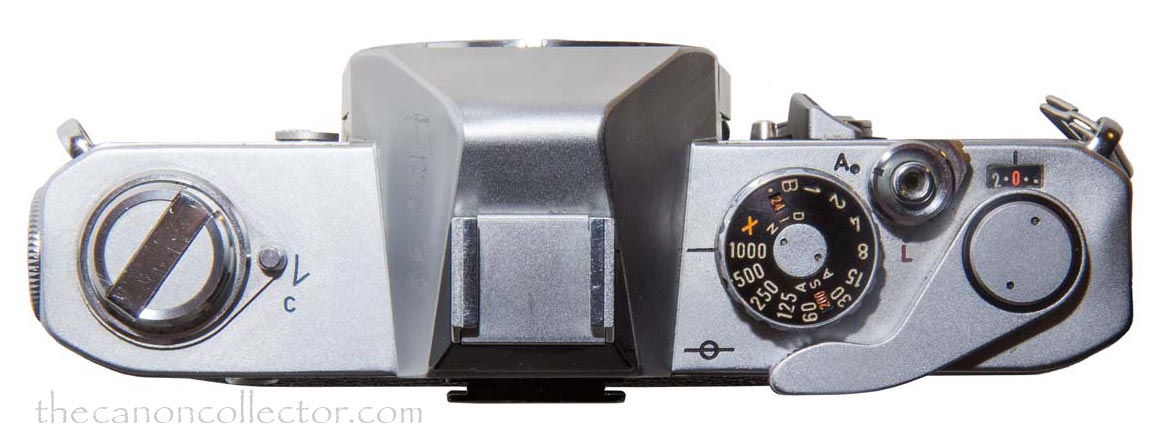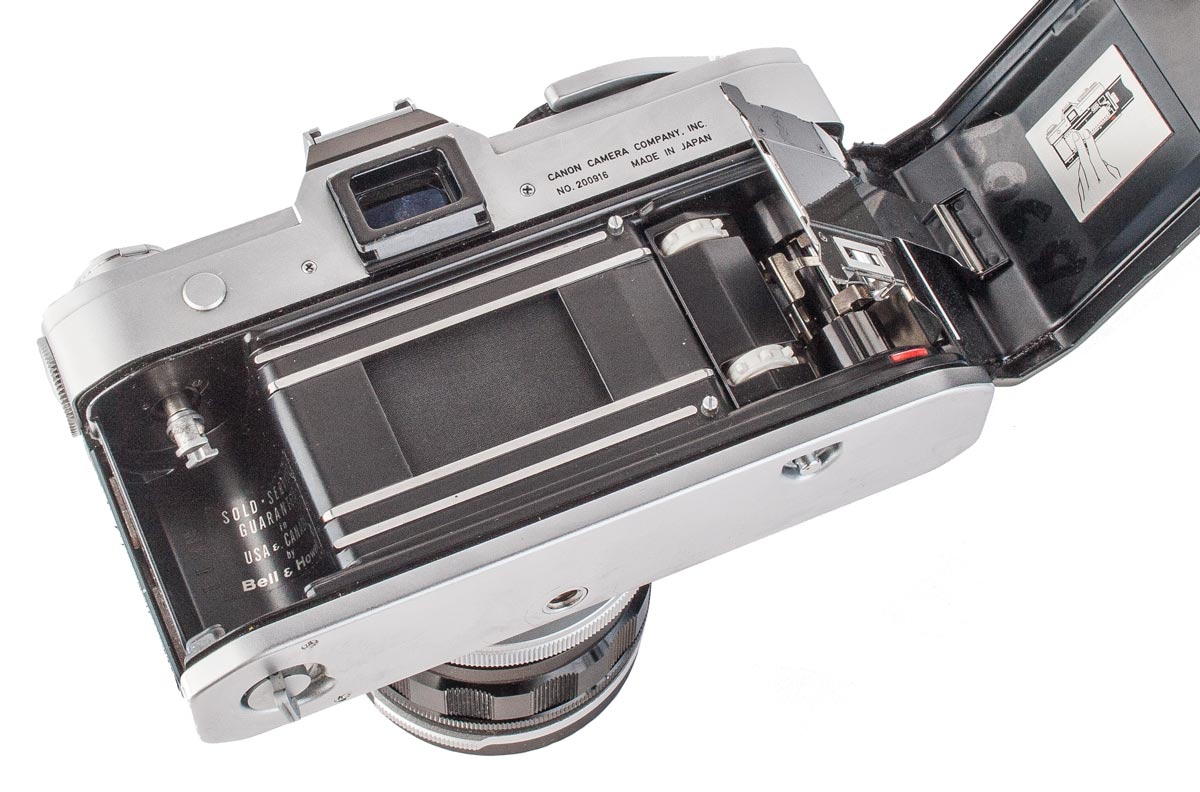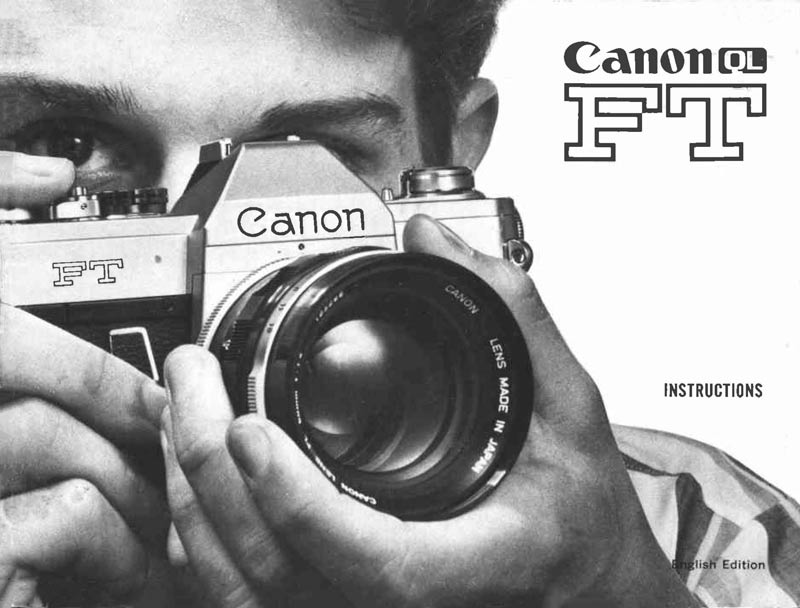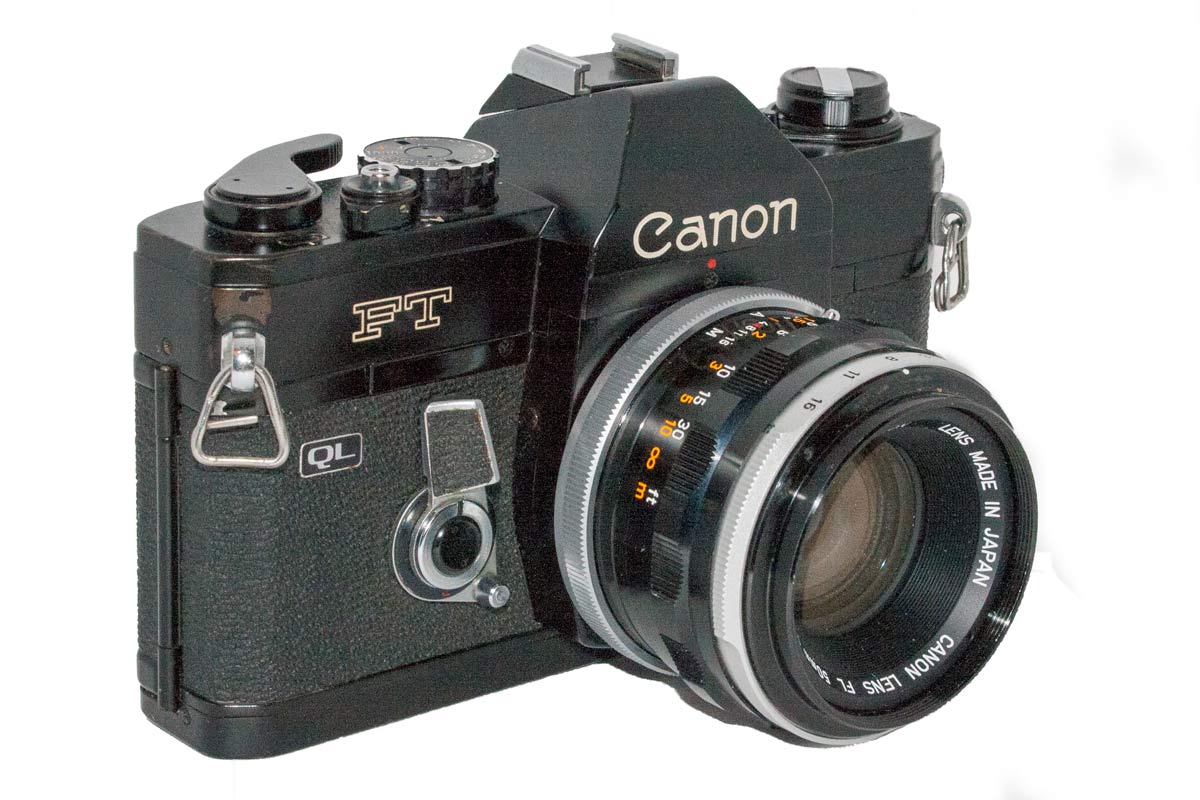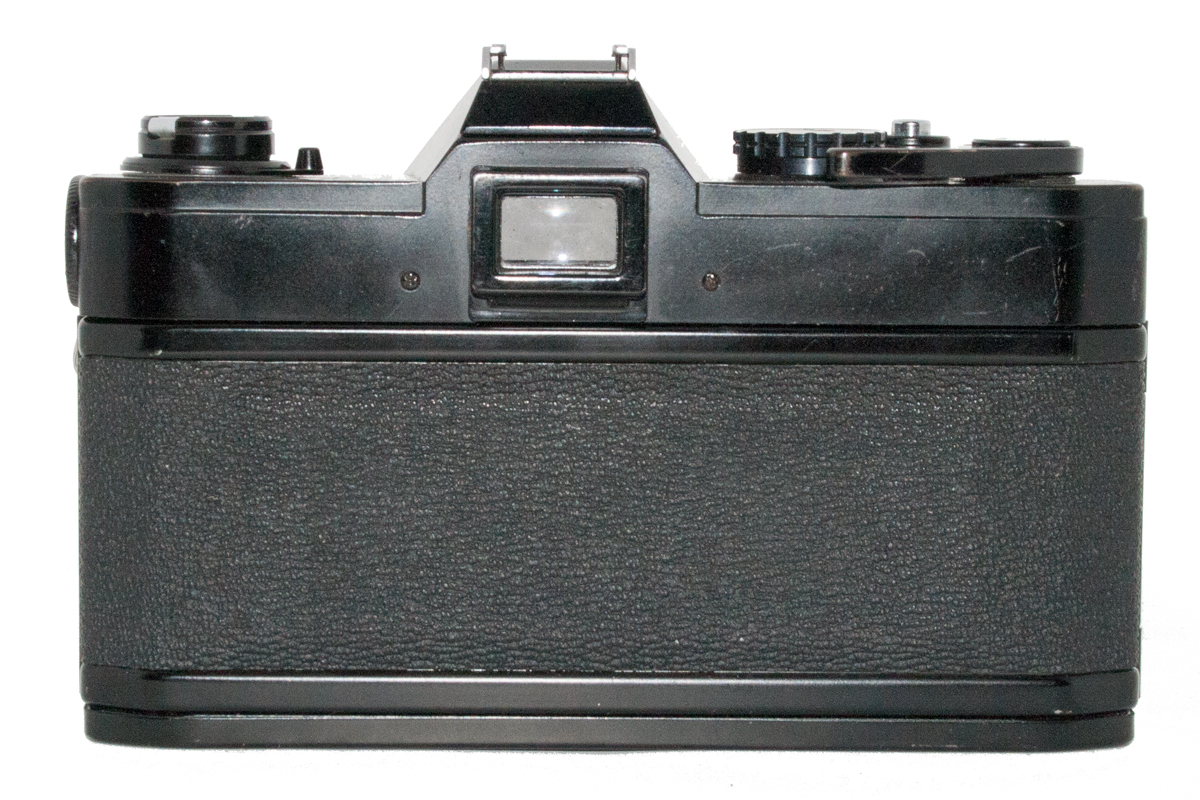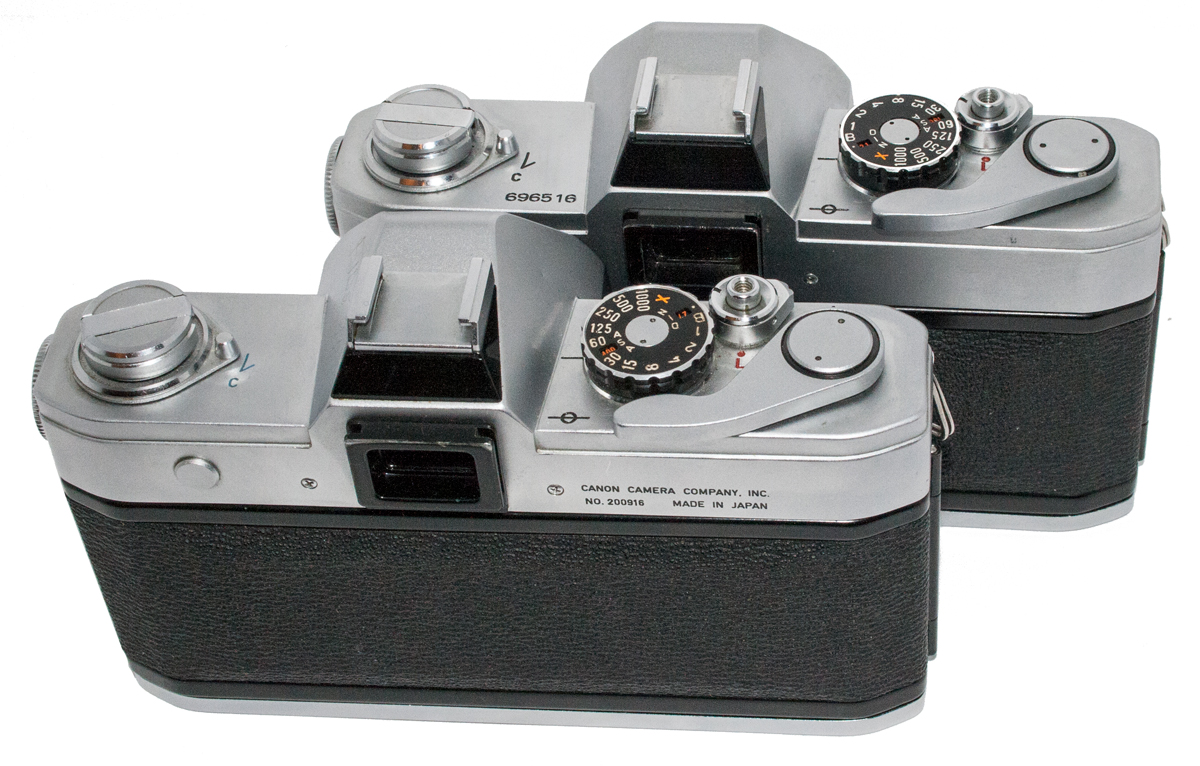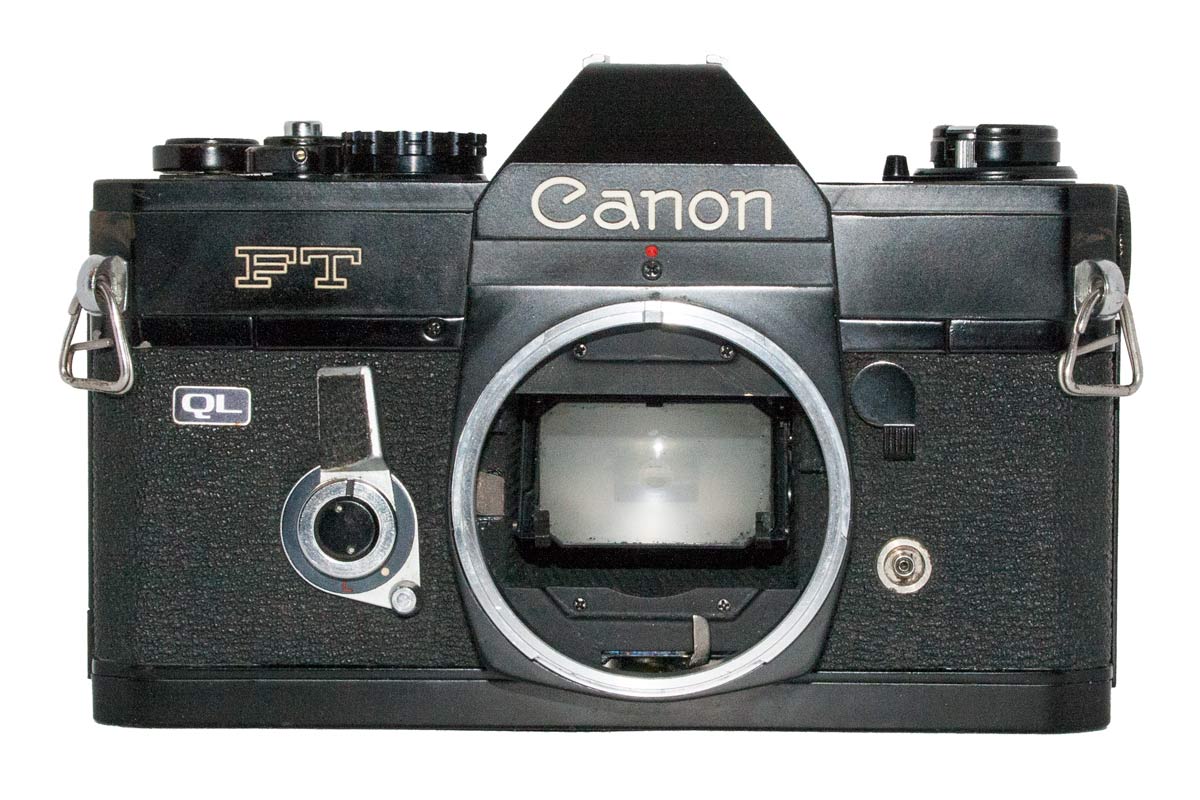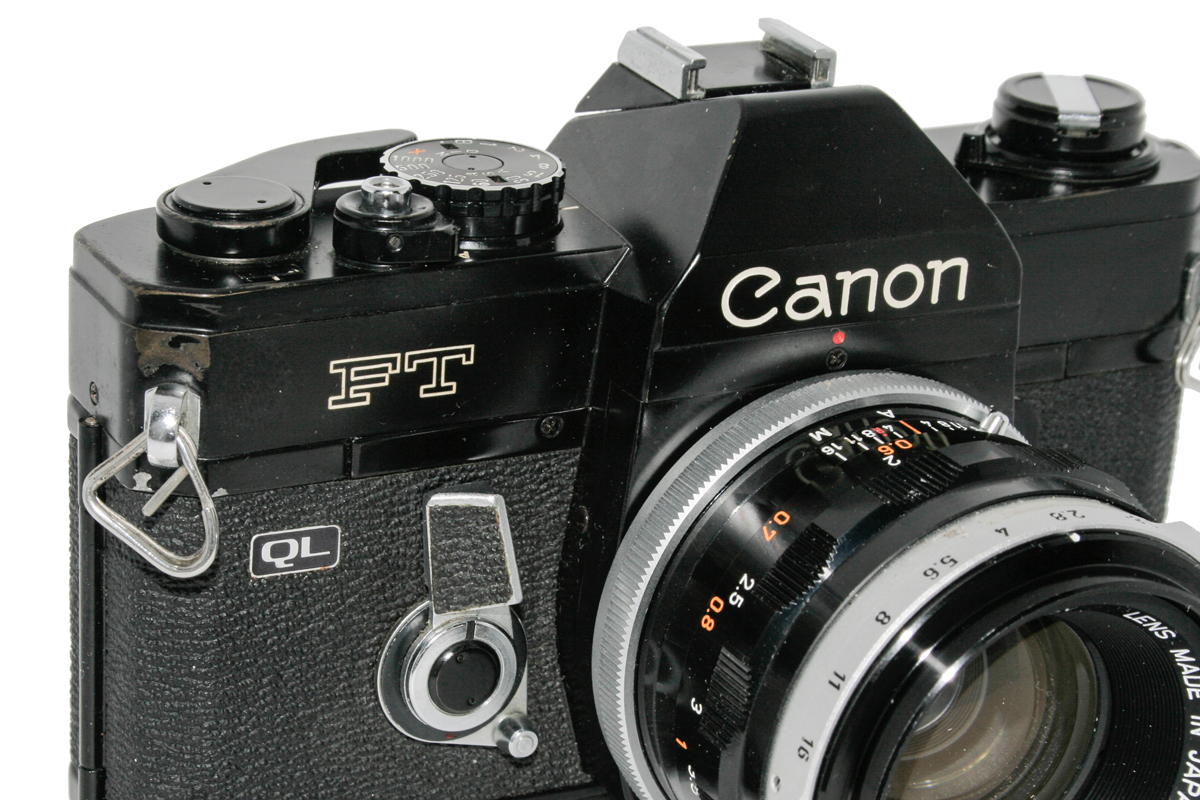Canon FT QL
TTL Metering Arrives
Canon began the “F” Series with the Canon FX which had a built in light meter but it was not integrated into the exposure settings.
The light meter read the light level through
a separate sensor window on the front left
of the top plate. There was no TTL metering. You read the needle scale and then set the cameras settings. Not even as good as the clip on light meter on the Model P Rangefinder camera. And then came the Canon FP which had no light meter. And then the Pellix which had an
integrated light meter but it was akward to use having to stop the lens down to take the light reading and then re-open for focusing.
And then Canon hit a home run! The Canon FT QL was introduced by Canon in March 1966. It had a Canon FL lens mount compatible with the large range of FL series lenses. And the built in light meter measured the light through the lens (TTL) with a “match needle” system. It was slick although having to stop the lens down to take the light reading was still awkward. Canon was playing catch up with this model but this was a good camera nevertheless. Canon offered this version to combat the growing popularity of the Pentax Spotmatic variants as well as the Topcon RE SLR’s.
On the left of the front deck is the combination meter switch and self timer. On the right at the top is the mirror lockup switch and below is the PC Socket for flash synchronization.
We have a Newsletter
There is a Newsletter for thecanoncollector.com to keep you up to date on what we are posting. Try it!
On the top deck of the camera on the left is the Battery Check Switch under the Rewind Knob. On the right is the Shutter Dial, Shutter Button, Button Lock, Film Counter and Rewind Lever.
The FT can also use the later Canon FD series lenses but the earlier R series, even though the bayonet mounting is the same, has a different lens aperture mechanism and you can expect problems depending on the lens. The standard kit lenses for the Canon FT QL were Canon’s FL 50mm f/1.8 ; FL 50mm f/1.4 and FL 58mm f/1.2.
FT QL was introduced a year after the pellicle mirrored Canon Pellix. However it differs from the Pellix models, having a normal quick-return reflex mirror and offering stop-down TTL metering. The TTL metering is semi-spot in nature and works through a prism
incorporated in the viewfinder condenser/screen assembly. The later Canon F-1 has a similar prism for metering in its removable screen. The Canon FT viewfinder screen is not user changeable.
The cloth focal plane shutter has speeds from 1 sec to 1/1000 and B. The electronic flash sync. speed is 1/60. A delayed action timer gives 8 – 10 seconds delay, using the same front of body lever that actuates the stop-down metering. The mirror can be locked up for vibration reduction or for use with special FL lenses like the original 19mm f3.5 wide angle which projects deeply into the body and would foul the mirror.
QL in the name of the Canon FT QL stands for “quick load”. This is accomplished by the device on the back hinge. Just lay the film leader across the film plain up to the orange mark and close the back.
The QL designation was a reference to Canon’s ingenious and successful “quick load” system. A stainless steel sprung hinged device inside the rear door makes film loading simpler than competing cameras of the era.
An accessory device, the Canon Booster, worked only with the FT QL and Pellix QL. It is a plug-in device that sits on the accessory shoe and increases the metering sensitivity by a factor of 16 for measuring exposure in poor light. Its operation is somewhat clumsy and is best kept for tripod use.
The FT QL was an important step for Canon that lead the company down a path of increasingly popular cameras. It was solid, well built, reliable and it exhibited the classic form of the SLR for the 1970’s and 80’s. FT QL production ended in 1972 after the FTb was introduced. The Canon FT QL can be found in the Canon Museum.
Variations
There is a minor variation hardly worth noting. When this camera first came out the serial number was engraved on the right side top of the camera back. Looking at several FT’s I realized that this was changed during production to include the serial number on the top deck on the left side near the back edge.
Looking at almost 50 FT’s I was able to find on line where I could read the serial numbers I found that the changeover occurred between serial # 357251 and 423598. There is still a spread here but it does narrow down when the change occurred.
I refer to the earlier cameras with serial on the back as Type I and those with the number on the top deck Type II. Not a big deal but interesting.
The second variation is, of course, that some FT’s were issued in “black”. I am assuming there were many black FT’s because it seems common to find them for sale. They are identical to the “chrome” editions and they do not seem to command a significantly higher price.
I assume they come in Type I and Type II although I have not seen a black Type I.
Two FT bodies. Look at the top plate by the rewind crank. One has a serial number, the other none. The serial number on the top is the later version.
My black FT QL (Ser. No. 789836). I like the black version. I think it looks sexier!
No matter how good the FT was, it was still playing catch up. It was not till the debut of the F-1 that Canon took the lead.
Same two cameras. One has a serial number on the back of the top plate and the other does not. These are the two variations discussed on the left.
Internally the black FT’s are identical to the ones in chrome finish.
At the time it was produced this was Canon’s flagship camera and a very capable one. But it was not a technological leader by any means!

